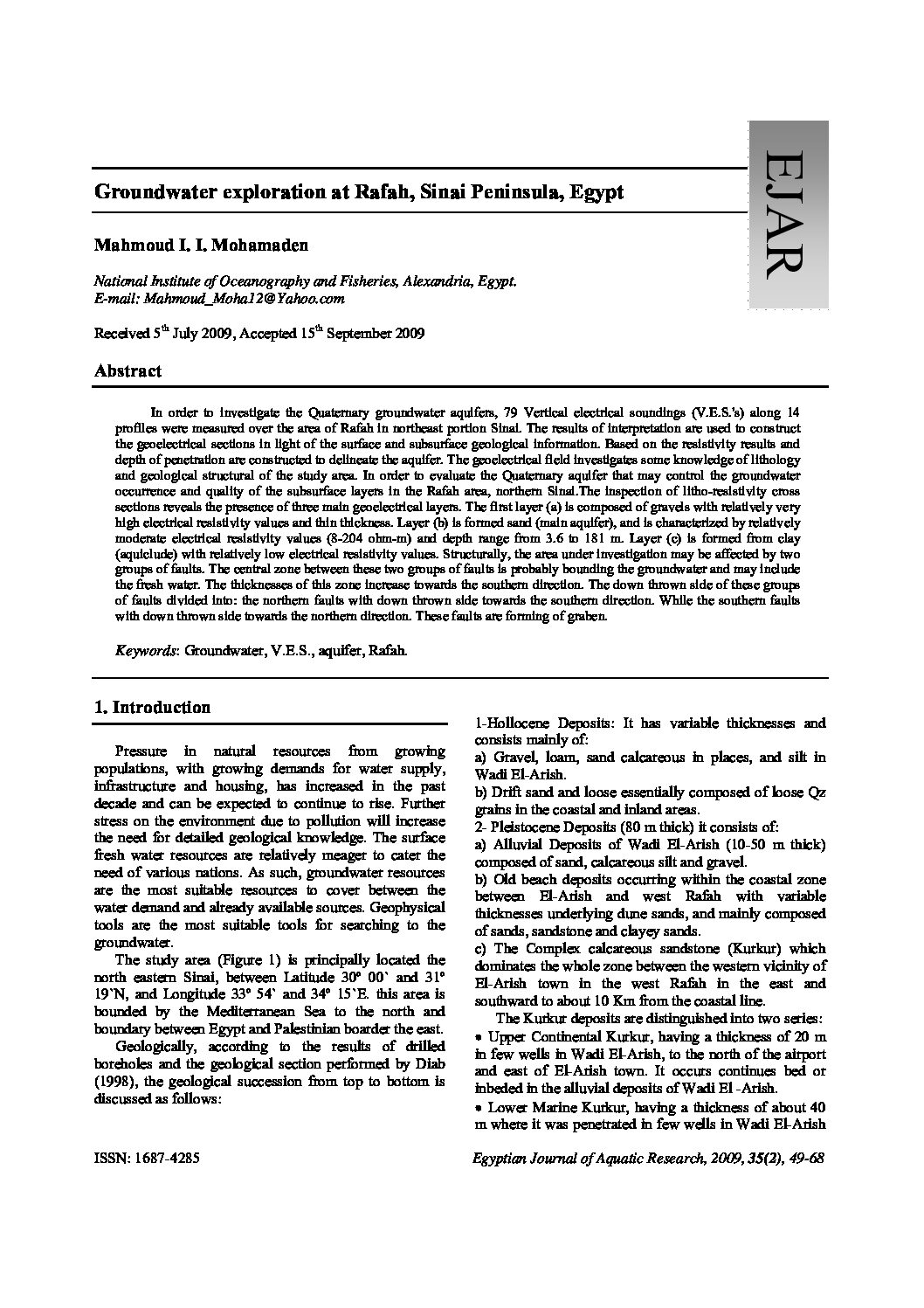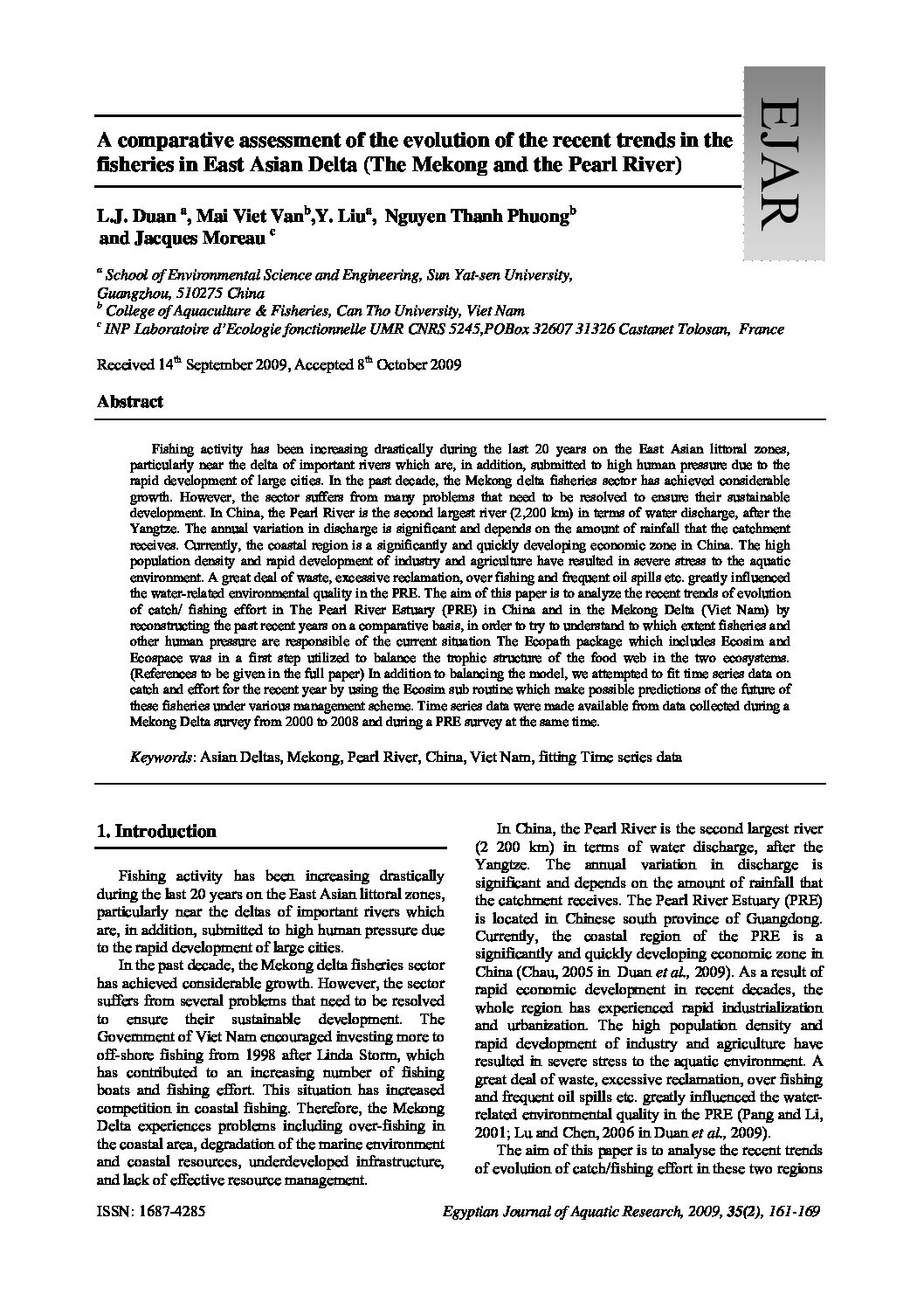Categories
vol-35Groundwater exploration at Rafah, Sinai Peninsula, Egypt
Mahmoud I. I. Mohamaden
National Institute of Oceanography and Fisheries, Alexandria, Egypt.
E-mail: [email protected]
Received 5th July 2009, Accepted 15th September 2009
Abstract
In order to investigate the Quaternary groundwater aquifers, 79 Vertical electrical soundings (V.E.S.’s) along 14
profiles were measured over the area of Rafah in northeast portion Sinai. The results of interpretation are used to construct
the geoelectrical sections in light of the surface and subsurface geological information. Based on the resistivity results and
depth of penetration are constructed to delineate the aquifer. The geoelectrical field investigates some knowledge of lithology
and geological structural of the study area. In order to evaluate the Quaternary aquifer that may control the groundwater
occurrence and quality of the subsurface layers in the Rafah area, northern Sinai.The inspection of litho-resistivity cross
sections reveals the presence of three main geoelectrical layers. The first layer (a) is composed of gravels with relatively very
high electrical resistivity values and thin thickness. Layer (b) is formed sand (main aquifer), and is characterized by relatively
moderate electrical resistivity values (8-204 ohm-m) and depth range from 3.6 to 181 m. Layer (c) is formed from clay
(aquiclude) with relatively low electrical resistivity values. Structurally, the area under investigation may be affected by two
groups of faults. The central zone between these two groups of faults is probably bounding the groundwater and may include
the fresh water. The thicknesses of this zone increase towards the southern direction. The down thrown side of these groups
of faults divided into: the northern faults with down thrown side towards the southern direction. While the southern faults
with down thrown side towards the northern direction. These faults are forming of graben.
Keywords: Groundwater, V.E.S., aquifer, Rafah







